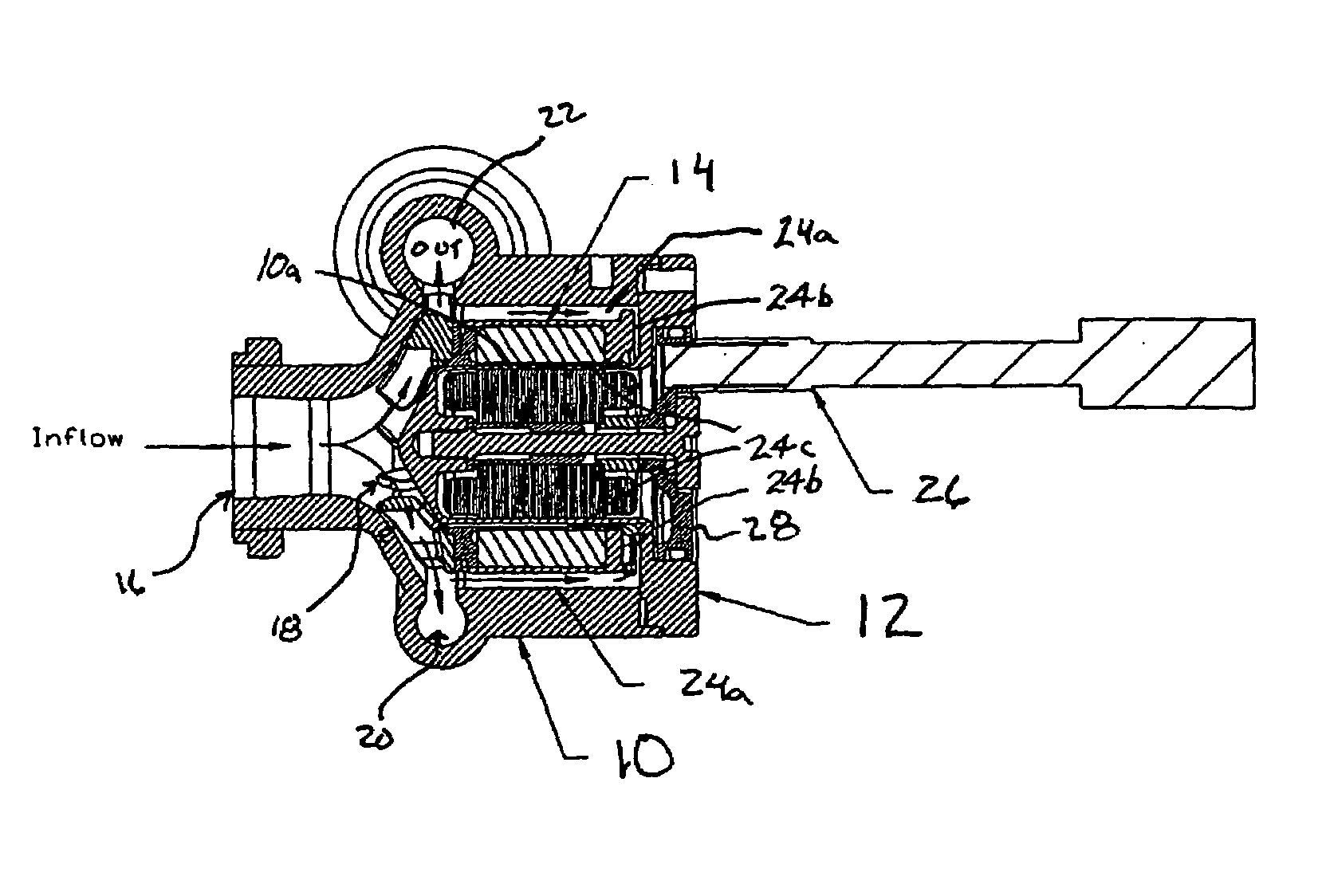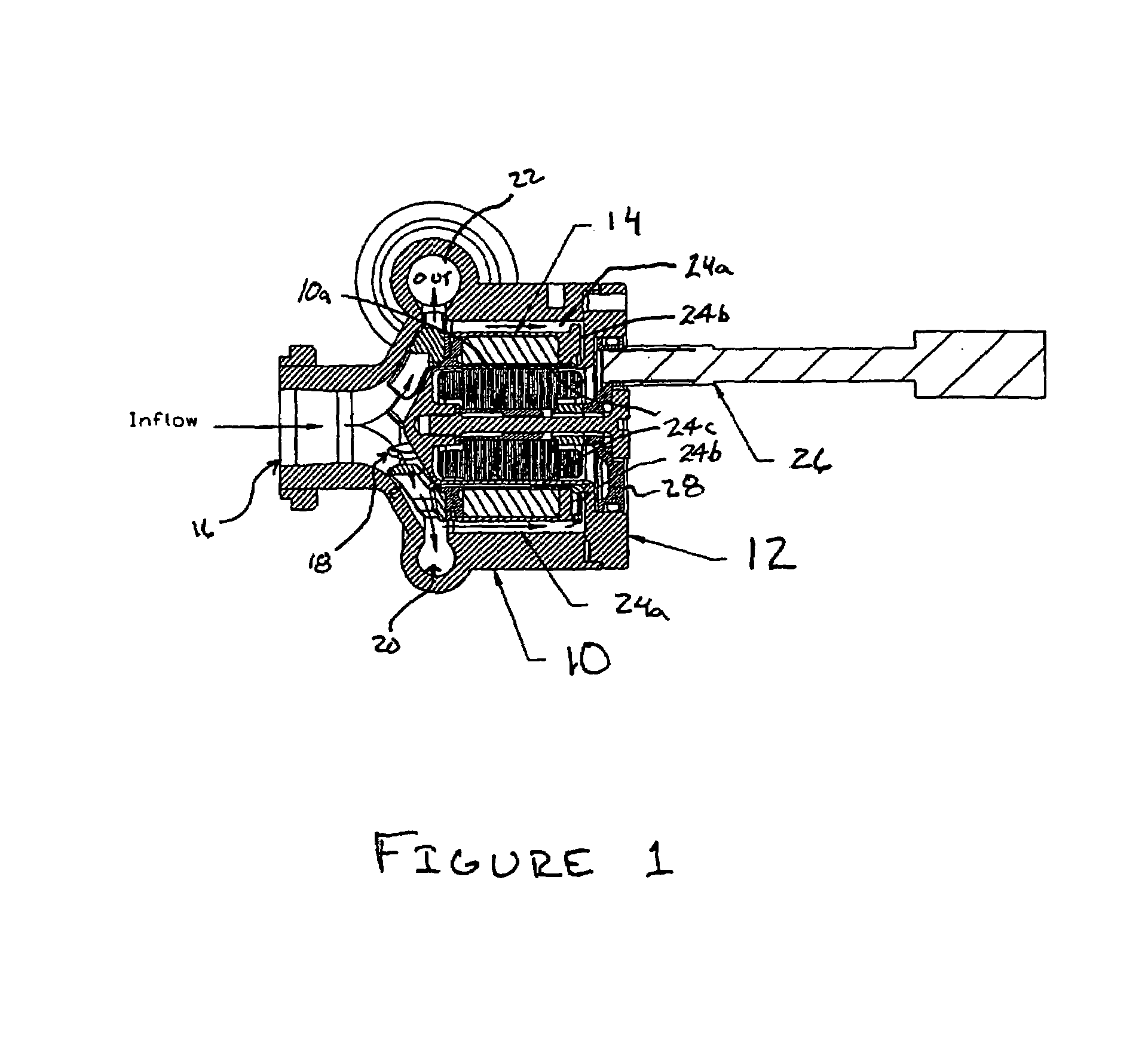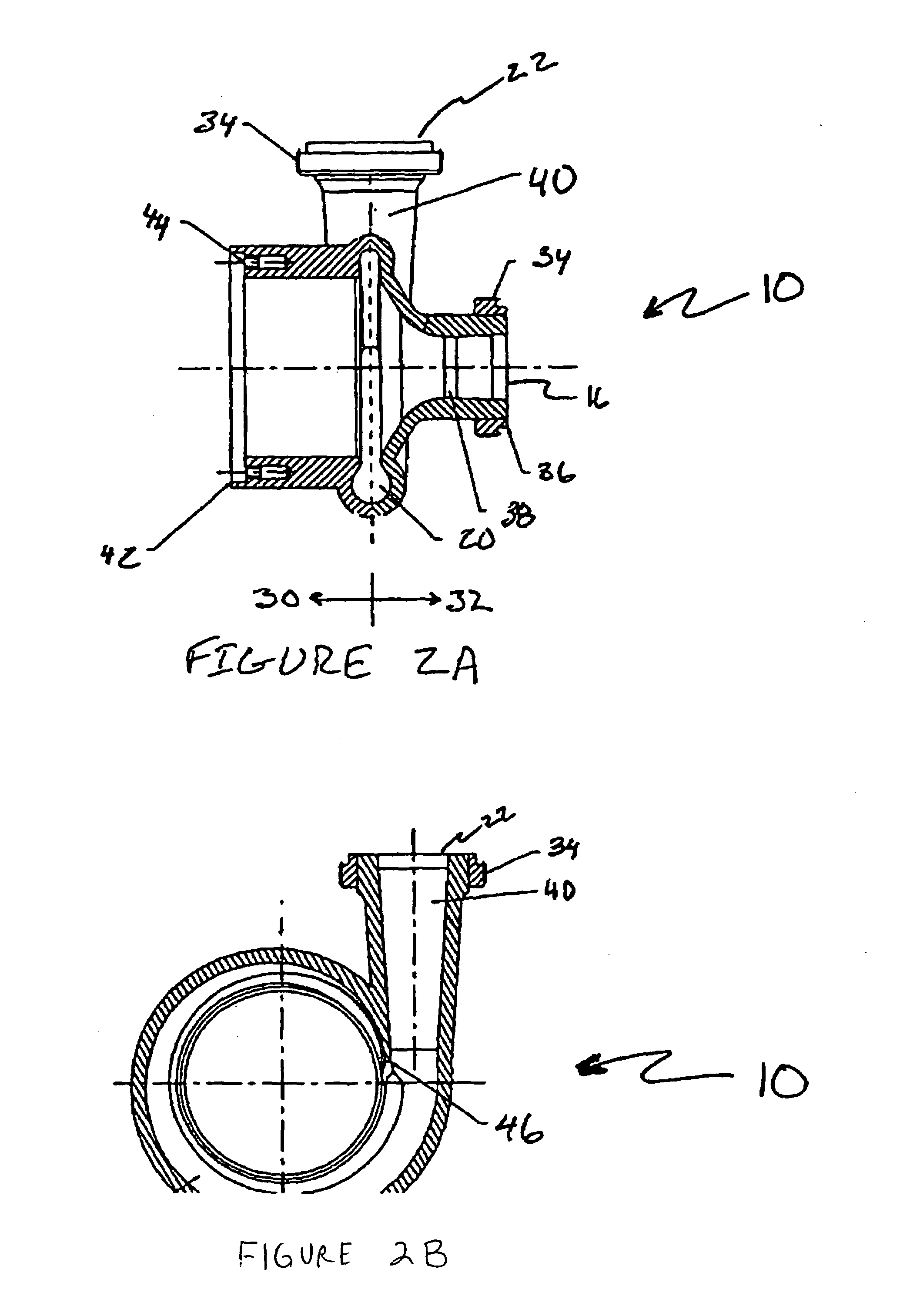Ventricular assist system secondary impeller
a technology of assist system and secondary impeller, which is applied in the field of medical science, can solve the problems of undesirable and potentially life-threatening for patients, heat and/or stagnation of blood,
- Summary
- Abstract
- Description
- Claims
- Application Information
AI Technical Summary
Benefits of technology
Problems solved by technology
Method used
Image
Examples
Embodiment Construction
[0023]With reference to FIG. 1, a centrifugal flow blood pump comprises three primary subassemblies, namely a volute housing assembly 10, a stator assembly 12, and a rotating assembly or rotor 14. Blood from a patient flows into an inlet port 16 of the blood pump. Arrows (unnumbered) indicate the direction of travel of the blood through the pump in the preferred embodiment. The blood specifically by primary impeller 18. The blood proceeds around the volute housing, first entering a volute channel 20 and a primary portion exiting the pump via a discharge port 22.
[0024]A small portion of the blood flows into a second channel or passage 24, specifically a first passage portion 24a that extends axially from a rear face of the primary impeller and is radially interposed between the rotor and a post formed by an axial extension 10a of the stator housing that protrudes into a pump chamber defined in the volute housing. As is well known, the chamber is in fluid communication with the inlet ...
PUM
 Login to View More
Login to View More Abstract
Description
Claims
Application Information
 Login to View More
Login to View More - R&D
- Intellectual Property
- Life Sciences
- Materials
- Tech Scout
- Unparalleled Data Quality
- Higher Quality Content
- 60% Fewer Hallucinations
Browse by: Latest US Patents, China's latest patents, Technical Efficacy Thesaurus, Application Domain, Technology Topic, Popular Technical Reports.
© 2025 PatSnap. All rights reserved.Legal|Privacy policy|Modern Slavery Act Transparency Statement|Sitemap|About US| Contact US: help@patsnap.com



